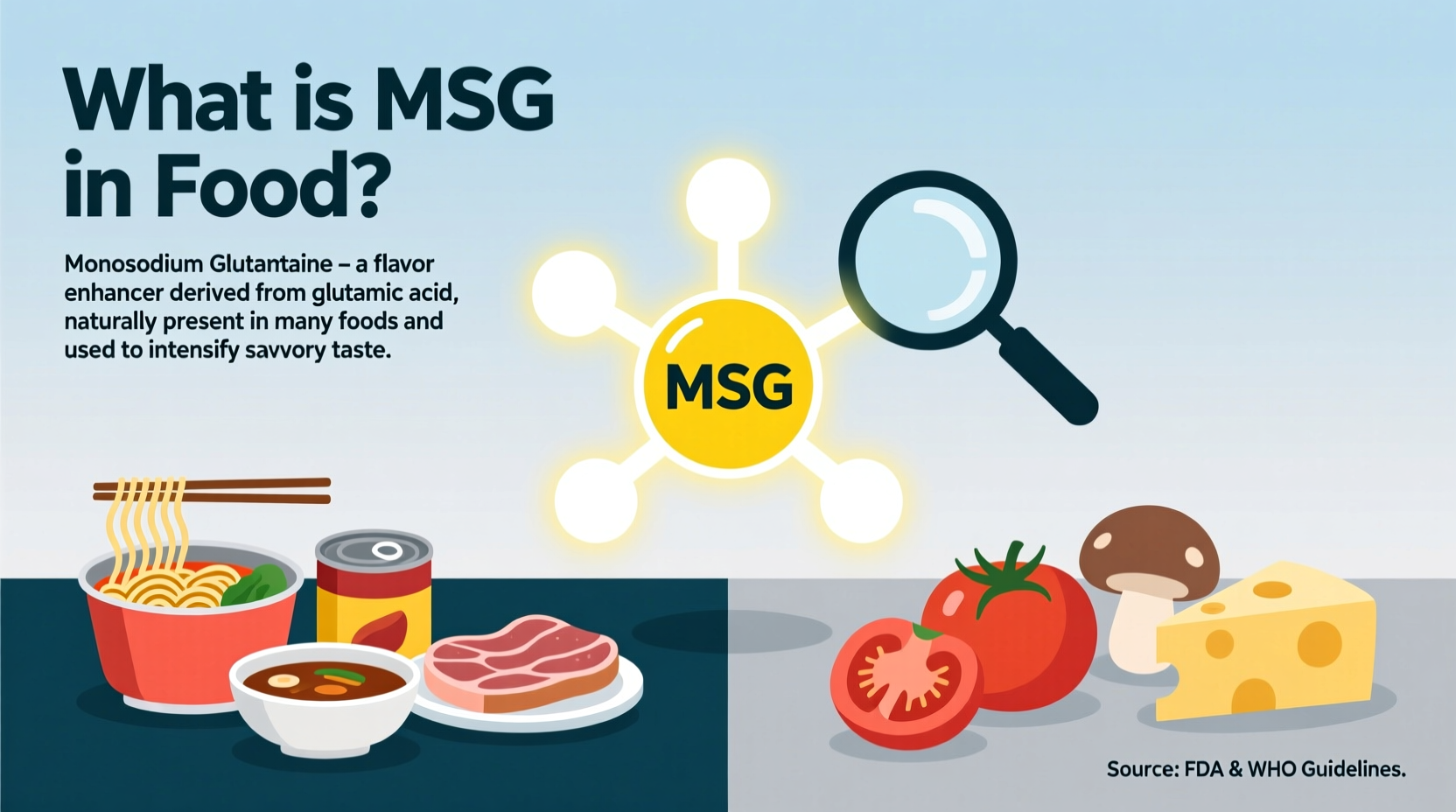Monosodium glutamate (MSG) is a flavor enhancer made from glutamic acid, a naturally occurring amino acid. In food, MSG boosts umami—the fifth basic taste—by binding to specific receptors on your tongue. Scientific consensus from the FDA, WHO, and EFSA confirms MSG is safe for general consumption at typical dietary levels.
Ever wondered why certain dishes deliver that deeply satisfying, savory punch? The secret often lies in monosodium glutamate—better known as MSG. This common food additive has been misunderstood for decades, shrouded in myths that don't align with current scientific understanding. Let's cut through the confusion with evidence-based facts you can trust.
The Science Behind MSG's Flavor Magic
MSG consists of sodium and glutamate—one of the 20 amino acids that build proteins. Glutamate occurs naturally in foods like tomatoes, Parmesan cheese, and mushrooms. When isolated and combined with sodium, it becomes monosodium glutamate, which amplifies umami taste perception.
Unlike table salt that triggers only salty receptors, MSG activates specific umami taste receptors on your tongue. This creates a synergistic effect—meaning when MSG combines with natural glutamates in foods like ripe tomatoes or aged cheeses, the savory sensation multiplies significantly.
MSG Timeline: From Seaweed to Supermarket Shelves
Understanding MSG's history helps separate fact from fiction:
- 1908: Japanese chemist Kikunae Ikeda isolates glutamate from kombu seaweed while researching dashi broth's distinctive flavor
- 1959: FDA classifies MSG as Generally Recognized As Safe (GRAS)
- 1968: "Chinese Restaurant Syndrome" term coined in a letter to New England Journal of Medicine, sparking decades of misinformation
- 1987: Joint FAO/WHO Expert Committee confirms MSG safety at normal consumption levels
- 2017: European Food Safety Authority reaffirms MSG safety, setting acceptable daily intake at 30mg per kg of body weight
Natural Glutamate vs. Added MSG: Key Differences
| Characteristic | Natural Glutamate | Added MSG |
|---|---|---|
| Source | Tomatoes, cheese, mushrooms, human breast milk | Commercially produced through fermentation of starches/sugars |
| Concentration | Lower, bound within protein structures | Higher, free glutamate for immediate taste impact |
| Digestion | Slow release as proteins break down | Rapid absorption in upper digestive tract |
| Taste Impact | Subtle background umami | Immediate, pronounced savory enhancement |
Decoding Food Labels: Where MSG Hides in Plain Sight
While "monosodium glutamate" must appear on labels when directly added, many ingredients naturally contain free glutamate. Check for these common sources:
- Hydrolyzed vegetable protein
- Yeast extract
- Autolyzed yeast
- Calcium caseinate
- Soy sauce (naturally contains glutamate)
- Malted barley
The FDA requires clear labeling of added MSG but doesn't mandate disclosure of naturally occurring glutamate. This distinction matters for those tracking total glutamate intake.
MSG Safety: What 50 Years of Research Reveals
Multiple comprehensive reviews confirm MSG's safety profile:
- FDA's current position maintains MSG is safe, noting "no consistent evidence" linking it to adverse reactions
- European Food Safety Authority's 2017 re-evaluation established a safe intake level of 30mg per kg of body weight daily
- National Institutes of Health studies show most reported "MSG sensitivity" symptoms occur at similar rates with placebo
While a small subset of people may experience mild, temporary symptoms when consuming large amounts (3+ grams) without food, these reactions aren't dangerous and resemble common food intolerances. The scientific consensus firmly rejects the "Chinese Restaurant Syndrome" myth as unsupported by evidence.
Practical Guidance for Mindful MSG Consumption
You don't need to eliminate MSG from your diet, but these strategies help you make informed choices:
- Read labels carefully: Look for "monosodium glutamate" in ingredient lists
- Understand natural sources: Foods like aged cheeses and tomatoes contain natural glutamate
- Cook with umami-rich ingredients: Use mushrooms, tomatoes, or seaweed to boost flavor naturally
- Moderation matters: Like salt, MSG enhances flavor but shouldn't dominate dishes
Professional chefs often use small amounts of MSG (about 1/8 teaspoon per pound of meat) to enhance complex flavors without making the additive noticeable. This technique, common in fine dining kitchens worldwide, demonstrates how MSG functions as a culinary tool rather than a crutch.

Beyond the Hype: MSG in Global Cuisine
MSG's reputation varies dramatically across cultures. In Japan and China, where it was discovered and first commercialized, MSG remains a standard kitchen staple. European regulations treat it like any other food additive, while American consumers have been disproportionately influenced by decades of misinformation.
Modern food science recognizes umami as a fundamental taste dimension alongside sweet, sour, salty, and bitter. This scientific validation has helped shift the conversation from fear to understanding how glutamate enhances our eating experience.











 浙公网安备
33010002000092号
浙公网安备
33010002000092号 浙B2-20120091-4
浙B2-20120091-4